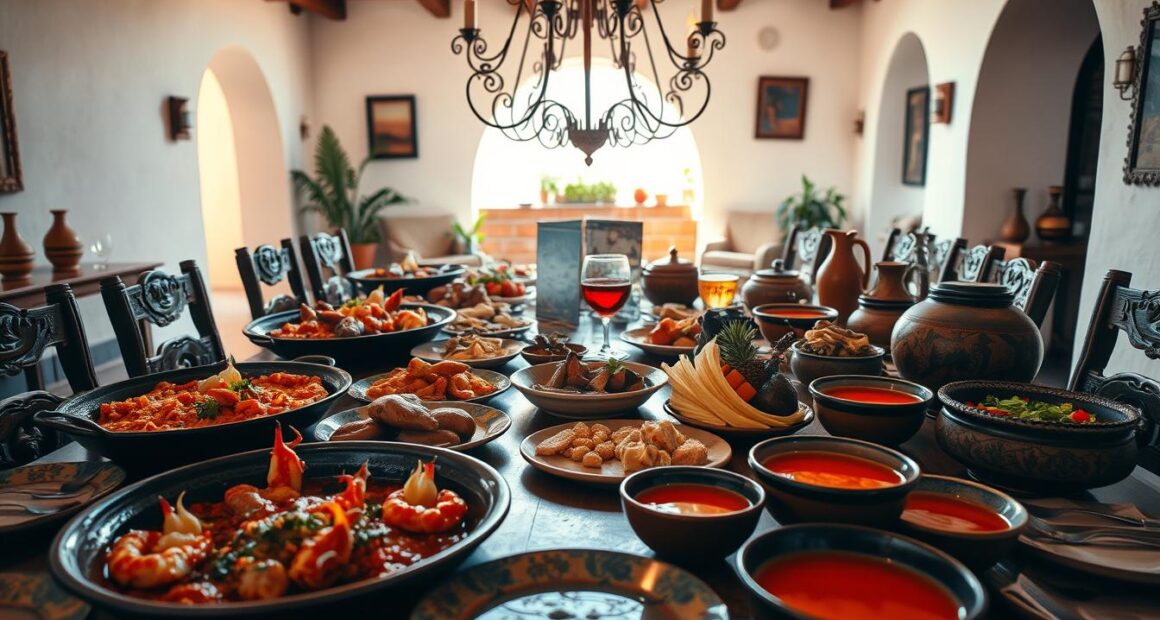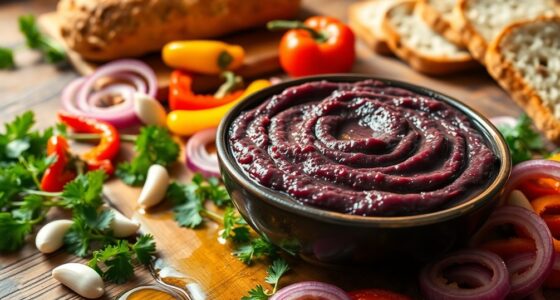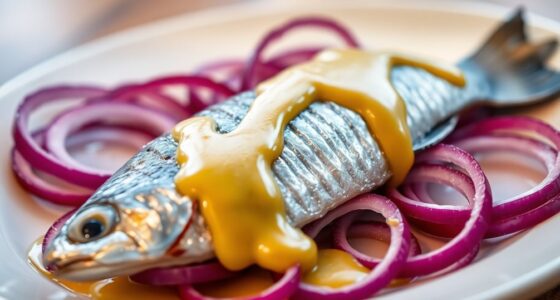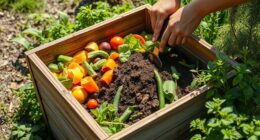Imagine wandering through vibrant markets, the air infused with the tantalizing aroma of garlic, tomatoes, and sizzling seafood. As you navigate through stalls filled with rich colors and flavors, you can’t help but feel connected to the soul of a culture that has thrived for centuries. In Spanish cuisine, every dish tells a story, woven together by history, tradition, and the love of food. When you think of authentic Spanish dishes, your mind may immediately conjure images of paella, tapas, and churros, each reflecting a unique aspect of Spain’s diverse culinary landscape.
From the mouthwatering simplicity of a classic tortilla española to the luxurious experience of indulging in jamón ibérico, Spain offers a feast that captivates not just the palate but the heart. UNESCO’s recognition of Spanish cuisine as an Intangible Cultural Heritage of Humanity only underscores its significance on the global stage. With over 270 Michelin-starred restaurants, Spain is a beacon for food lovers, showcasing the incredible talent of its top Spanish chefs. So, let’s embark on this delicious journey together and discover the best of what Spanish cuisine has to offer—it’s not just a meal; it’s an experience waiting to be savored.
Key Takeaways
- Spanish cuisine is celebrated for its rich cultural heritage and diverse flavors.
- Signature dishes like paella and tapas have deep historical roots and regional variations.
- Top Spanish chefs are earning recognition globally, with countless Michelin-starred restaurants.
- Using fresh, local ingredients is essential in creating authentic Spanish dishes.
- Food is a key aspect of Spanish festivals and cultural traditions.
An Introduction to Spanish Cuisine
Spanish cuisine represents a vibrant culinary landscape shaped by a rich history and influences from various cultures, notably the Moors, Romans, and Jews. These diverse backgrounds have culminated in a culinary tradition that skillfully blends flavors, ingredients, and cooking techniques. As you explore what makes Spanish food unique, you’ll come to appreciate how the essence of traditional Spanish cooking is deeply entrenched in community and family values.
Rich History and Influences
The evolution of Spanish cuisine is a testament to the nation’s historical tapestry. From the Roman introduction of olive oil to the Moorish influence that brought rice, spices, and fruits, each cultural wave added its layer to the culinary narrative. The Mediterranean diet, recognized as an Intangible Cultural Heritage by UNESCO, underscores the importance of fresh ingredients and communal meals, further highlighting Spain’s rich history and influences.
Regional Variations
Spain boasts a remarkable variety of regional Spanish cuisine, with every region offering distinct dishes that reflect local traditions and available ingredients. For instance, you might savor a seafood paella in the coastal Valencia or enjoy tapas in the vibrant streets of Andalusia. From the hearty stews of the north to the rich rice dishes of the south, these regional specialties celebrate the spirit of traditional Spanish cooking. Discover the diverse flavors and textures that each region brings to the table, making Spanish cuisine an endless exploration of taste.
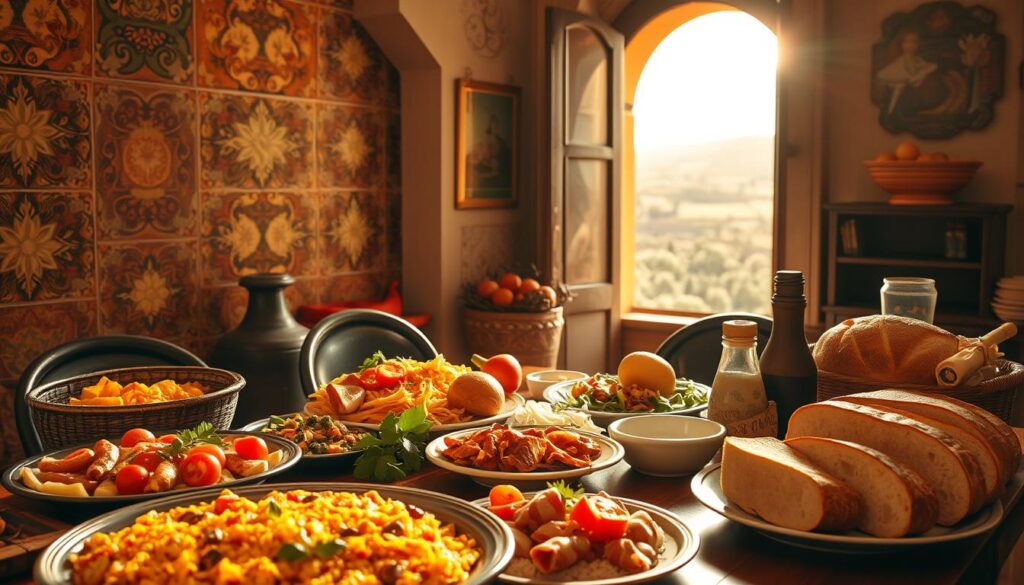
Essential Ingredients in Spanish Cooking
Mastering the essential ingredients in Spanish cooking is crucial for anyone looking to create authentic dishes. The foundation of this cuisine relies heavily on a few standout items, which not only have rich flavors but also reflect the country’s diverse agricultural landscape. High-quality olive oil and saffron are two pivotal components, while fresh vegetables add vibrancy and depth to many recipes. Understanding how these elements work together enhances your grasp of traditional Spanish cooking techniques, resulting in flavorful and memorable meals.
Olive Oil
Olive oil stands as the cornerstone of Spanish cuisine. Spain is home to nine of the top ten best olive oils in the world, underscoring the country’s prominence in olive production. Extra virgin olive oil, known for its robust flavor, is the most commonly used type. It plays an important role in various dishes, serving as the base for dressings and a key ingredient in cooking methods, such as sautéing vegetables or drizzling over dishes for added flavor. The rich, fruity notes of high-quality olive oil elevate everything from traditional gazpacho to complex paellas.
Saffron
Saffron, often referred to as *liquid gold*, is another essential ingredient in Spanish cooking. This spice requires an enormous amount of flowers to produce just a fraction, making it one of the most expensive spices in the world. Spanish saffron is particularly prized for its potent flavor and bright color, bringing a unique touch to dishes like paella. Its distinct properties highlight the importance of using high-quality saffron to achieve the full spectrum of flavors typical in Spanish cuisine.
Fresh Vegetables
Fresh vegetables form the backbone of many beloved Spanish recipes. Staple ingredients like tomatoes, onions, and garlic not only provide essential flavors but also reflect Spain’s rich agricultural heritage. Tomatoes, introduced to Spain in the 16th century, are frequently featured in both raw and cooked forms, lending their sweetness and acidity to various dishes. Garlic, indispensable in many recipes, is vital for creating the bold flavors characteristic of Spanish cuisine. Incorporating a variety of fresh vegetables is key to truly embracing the essence of Spanish cooking.

Tapas: The Heart of Spanish Dining
Tapas deliver a unique dining experience, encouraging you to share small plates with friends and family. Originating from the cultural traditions of the Basque Country, these delightful dishes represent the heart of Spanish dining. With their emphasis on socializing, tapas invite you to explore a variety of flavors without committing to a large meal, fostering a vibrant atmosphere in restaurants and bars.
What Are Tapas?
Tapas are small portions of food that serve as appetizers or snacks. They can range from simple olives to more elaborate offerings like potato croquettes and garlic shrimp. A typical tapas menu often presents around 10 to 15 different options, which allows you to sample multiple flavors in one sitting. Ordering 3 to 5 small plates per person can turn a casual evening into a fulfilling culinary experience.
Popular Tapas Dishes
Diving into popular tapas dishes reveals the rich variety within Spanish cuisine. Common choices include:
- Patatas bravas – Spicy fried potatoes served with a tangy sauce
- Gambas al ajillo – Garlic shrimp sizzling in olive oil
- Manchego cheese – A tasty sheep’s milk cheese served with bread
- Spanish omelet – A classic dish made with eggs and potatoes
- Ham croquettes – Crispy bites filled with delicious ham
This wide selection highlights the communal nature of dining in Spain, allowing you to enjoy an informal yet rich tasting experience. The popularity of these delectable tapas dishes has contributed to the rise of tapas restaurants across urban areas, fostering a social dining culture that many find appealing.
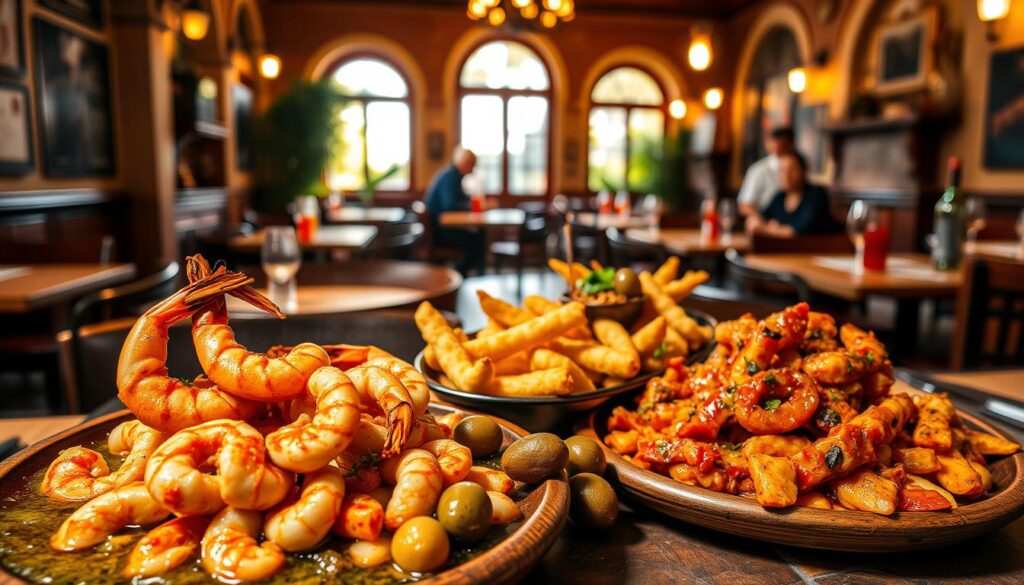
Paella: Spain’s Signature Dish
Paella, widely regarded as Spain’s signature dish, hails from the Valencia region where it was originally crafted by farmers. You can enjoy a delightful variety of paellas, each with unique flavors and ingredients. The three most popular types include the classic paella Valenciana, seafood paella, and mixed paella, which combines both meat and seafood. Understanding these variations will enhance your appreciation for this iconic dish.
Types of Paella
- Paella Valenciana: Made with chicken, rabbit, green beans, and the essential seasoning of saffron.
- Seafood Paella: Features shrimp, mussels, and clams, showcasing the coastal flavors of Spain.
- Mixed Paella: A delicious combination of meat and seafood, suitable for those looking for a hearty meal.
Cooking Tips for Perfect Paella
Creating the perfect paella recipe requires attention to detail. Start with quality ingredients, especially Bomba or Calasparra rice, known for its ability to absorb flavors while remaining tender. Here are some essential cooking tips for paella:
- Cook the rice for about 20 to 23 minutes after adding liquid to achieve the perfect texture.
- Focus on achieving the socarrat, the delectable crispy layer at the bottom, by adjusting heat levels carefully.
- Use a large paella pan for optimal cooking, though a 12-inch skillet will suffice in a pinch.
- Consider traditional open flame cooking for an authentic experience.

By following these cooking tips for paella, you’ll be well on your way to savouring this beloved dish from Spain. Remember, leftover paella can be stored in an airtight container for 2-3 days or frozen for up to 2 months, ensuring you can enjoy your culinary creation even longer.
Gazpacho: A Refreshing Summer Soup
Gazpacho, a traditional Spanish soup, captures the essence of summer with its vibrant flavors and refreshing qualities. Originating from southern Spain, its historical roots trace back to Greek and Roman times. This rejuvenating soup relies heavily on high-quality, fresh vegetables, making it a perfect dish to enjoy in warmer months.
Traditional Ingredients
The heart of gazpacho lies in its gazpacho ingredients. The classic recipe showcases an array of ripe vegetables, primarily:
- 3 large ripe heirloom tomatoes
- 1 ½ hothouse cucumbers
- ¾ bell pepper
- ½ red onion
- 1 clove garlic
To achieve a rich texture, traditional gazpacho includes ¼ cup of olive oil and 3 slices of white bread, typically sourdough or Italian, without crusts. Letting the chopped vegetables sit with salt for 15 minutes before blending helps draw out moisture, enhancing the flavor. The result should be a thick, smooth consistency with no watery texture.
| Ingredient | Quantity |
|---|---|
| Ripe Tomatoes | 2 ½ pounds |
| Hothouse Cucumbers | 1 ½ |
| Bell Pepper | ¾ |
| Red Onion | ½ |
| Garlic | 1 clove |
| Olive Oil | ¼ cup |
| Bread | 3 slices |
| Sea Salt | 1 ¼ teaspoons |
Serving Suggestions
For the ideal moment to serve your refreshing summer soup, chill it for at least 2 hours to enhance the complexity of flavors. When ready to enjoy, pour into bowls and personalize with garnishes such as:
- 1 cup cherry tomatoes
- ½ hothouse cucumber
- ¼ red bell pepper
- ¼ red onion
- Homemade garlic croutons
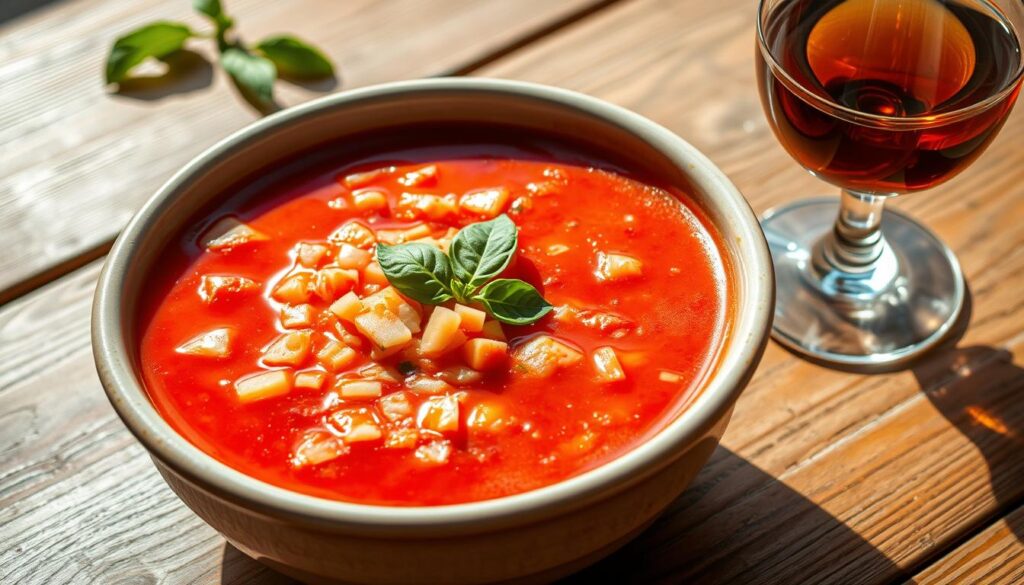
Consider pairing gazpacho with a sprinkle of fresh herbs or crumbled feta cheese to elevate the dish further. The vibrant colors and fresh ingredients make it visually appealing, ensuring that gazpacho will be a standout at your summer gatherings.
Jamón Ibérico: The Luxurious Ham
Jamón Ibérico stands out as one of the most prestigious culinary treasures of Spain. This luxurious ham is produced from the black Iberian pigs that graze on acorns, resulting in a rich flavor and unique texture. The meticulous curing process can take anywhere from 12 to 48 months, allowing the magnificent taste of jamón ibérico to develop fully. The admiration for this ham is not just about taste; it embodies a cultural heritage that is deeply rooted in Spanish cuisine.
What Makes It Special?
The secret behind the exceptional quality of jamón ibérico lies in both the breeding and the diet of the pigs. Raised in specific regions, these pigs graze on acorns, which contribute to the luxurious flavor of the ham. The highest grade, jamón ibérico de bellota, is produced from pure-bred Iberian pigs and requires at least 36 months of curing. Only the finest hams obtain the prestigious black label, known as “pata negra,” a term now exclusively relating to this elite classification. Such care and dedication make this luxurious ham a sought-after delicacy.
Best Ways to Enjoy Jamón Ibérico
Exploring the best ways to enjoy jamón ibérico is a delightful experience. Here are some popular serving styles:
- Thinly sliced on its own, highlighting the depth of flavor.
- Paired with artisan cheeses to create an elegant charcuterie board.
- Accompanied by olives, which complement the rich taste of the ham.
- Served atop slices of crusty bread with a drizzle of olive oil to tantalize your palate.
Incorporating jamón ibérico into your meals elevates any dining experience, showcasing the luxurious essence of Mediterranean cuisine.
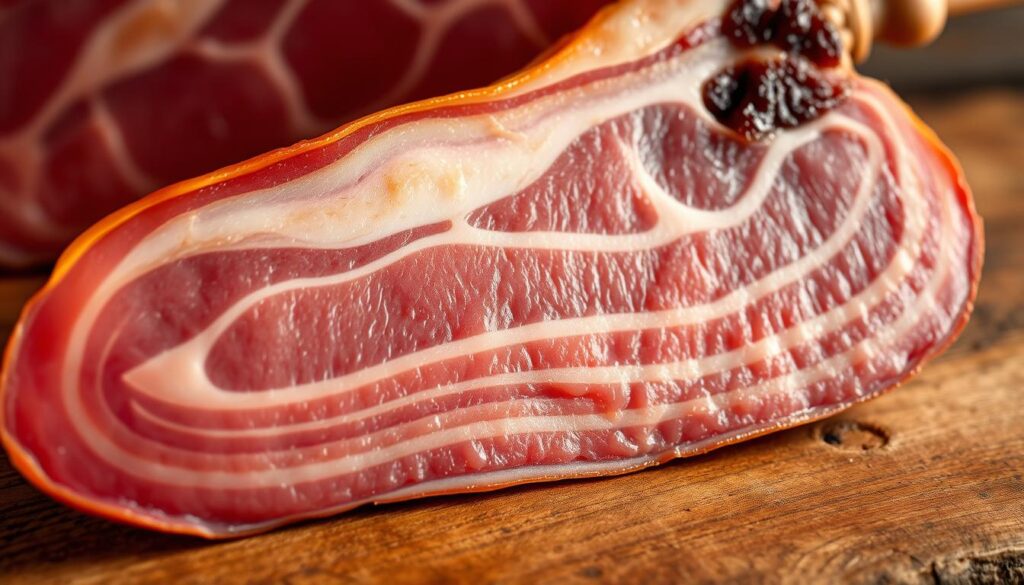
Tortilla Española: A Classic Spanish Omelette
Tortilla Española, also known as the classic Spanish omelette, is a beloved dish that showcases the art of simplicity in Spanish cuisine. With just a few essential ingredients, this dish is often found on the tables of most Spanish families at least once a week. The foundation of a tortilla española consists of eggs, potatoes, and sometimes onions. Learning to perfect the flip of the tortilla is key to achieving the desired balance between a firm exterior and a tender, slightly runny interior.
Ingredients You’ll Need
- 8 large eggs
- 1.5 pounds (700 g) Yukon Gold potatoes
- 0.75 pounds (350 g) yellow onions (optional)
- 2 cups (475 ml) extra-virgin olive oil
- Generous pinch of salt
Perfecting the Flip
Getting the flip just right requires practice. Start by cooking the potatoes and onions in olive oil for about 20 minutes until tender. Once the ingredients are ready, whisk the eggs with a pinch of salt and combine them with the potato and onion mixture. Allow this blend to rest for about 5 minutes for the best texture. When it’s time to cook, pour this into a heated 10-inch skillet and let it set for approximately 6-8 minutes on the first side, then attempt the flip. Repeat on the other side for another 6-8 minutes. Aim for 2 to 3 gentle flips to maintain thickness while achieving that signature texture. Patience and attention will reward you with a delightful slice of tortilla española.
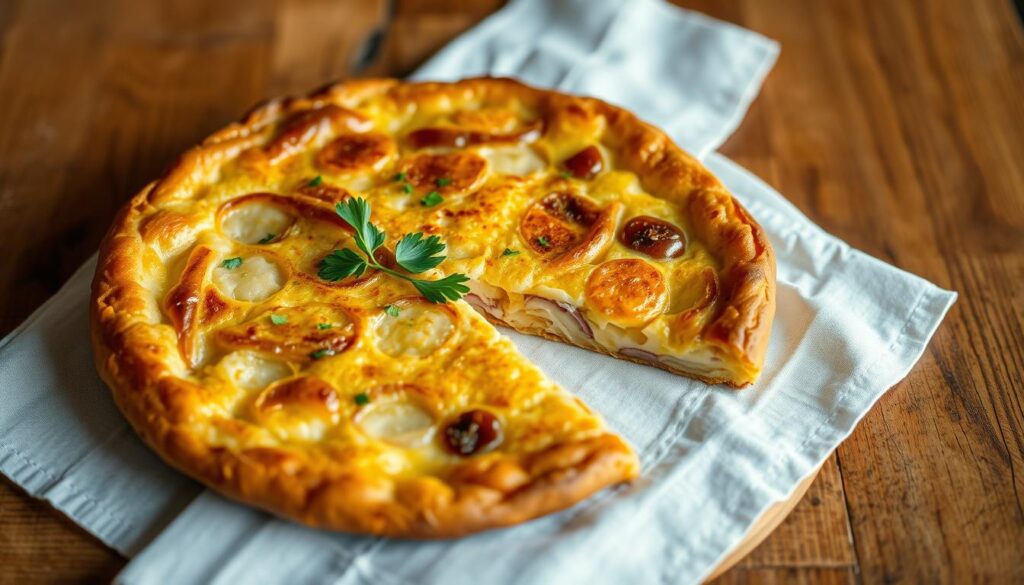
Churros: A Sweet Spanish Treat
Churros are a beloved sweet Spanish treat that have captured the hearts of many dessert lovers. Making churros at home can be an enjoyable experience that allows you to recreate this delightful pastry. The process involves a simple dough made with flour, water, and a pinch of salt, which is then deep-fried to perfection. You can easily whip up a batch of churros using your favorite churros recipes.
Making Churros at Home
To start preparing churros, gather the following ingredients: 1 cup of flour, 1 tablespoon of oil, 1 teaspoon of baking powder, and water. Mix until the dough reaches a thick consistency, which will allow it to hold its shape when piped. Heating oil to around 425°F creates that satisfying crunch on the outside while keeping the inside soft. Fry the churros for about 2-3 minutes until golden. The standard recipe yields approximately 16 churros from 2 cups of flour, offering a delightful snack or breakfast option.
Dipping Sauces to Try
Churros are traditionally paired with a rich hot chocolate that is thicker than American versions. For an ideal chocolate sauce, melt dark chocolate chips with heavy cream. A mixture of 70% cacao chocolate enhances the flavor beautifully. Experiment with different dipping sauces, such as caramel or even various flavored sauces to elevate your churros experience.

Spanish Wines: A Complement to Your Meal
When it comes to enhancing your dining experience, few things rival the impact of spanish wines. With over 60 official ‘denominaciones de origen’ (DOs) across the country, each region offers unique flavors and characteristics that can elevate your meals. Understanding the specific wine regions in Spain, such as Rioja, Ribera del Duero, and Priorat, can guide you in selecting the perfect accompaniments for your dishes.
Regions Known for Wine
Spain’s wine regions each boast distinct terroirs shaped by climate and geography. Here are some notable ones:
- Rioja – Known for Tempranillo, this area produces medium-bodied wines ideal for hearty meals.
- Ribera del Duero – Famous for its rich, full-bodied reds, perfect for pairing with gamey stews.
- Priorat – Offers robust blends, suitable for rich casseroles and stews.
- Rueda – A leading source of Verdejo, whose citrusy notes complement seafood dishes.
- Galicia – The home of Albariño, whose bright acidity makes it a great match for shellfish.
Best Pairings
Finding the best pairings elevates the dining experience with spanish wines. Consider the following options:
- Albariño enhances seafood dishes like tuna tartare or ceviche, thanks to its refreshing profile.
- Verdejo shines alongside mixed paella or roasted chicken, described by Chef Jose Andrés as one of the absolute best wines for food.
- Light-bodied reds from cooler regions complement charcuterie and tomato-based pastas.
- Full-bodied white wines, like oaked Chardonnay, pair wonderfully with roasted meats.
- Robust reds from Rioja and Ribera del Duero are perfect for steaks or rich stews.
You can also explore sparkling Cava for festive occasions or Sherry for a unique twist with tapas. The versatility of spanish wines makes them suitable for various cuisines, where you’ll find delightful pairings that transform each meal into a memorable experience.

Seafood in Spanish Cuisine
Seafood in Spanish cuisine holds significant importance, especially in coastal areas where fresh catches play a vital role in daily meals. Spain ranks second in the world for fish consumption per capita, with a true passion for seafood reflected in beloved dishes, from pulpo a la gallega to seafood paella. This culinary tradition is not only rich in flavors but also encompasses a variety of cooking techniques for seafood that enhance the natural qualities of the ingredients.
Popular Seafood Dishes
- Pulpo a la Gallega: Known for its tender octopus seasoned with olive oil and paprika.
- Seafood Paella: A colorful rice dish brimming with a mix of shellfish, fish, and saffron.
- Bacalao a la Vizcaina: A popular cod dish prepared with a rich sauce.
- Marmitako: A hearty tuna stew originally from fishing boats.
- Caldereta de Langosta: A luxurious lobster stew from the Balearic Islands.
Cooking Techniques
Cooking techniques for seafood are versatile, ranging from grilling and sautéing to boiling and steaming. Each technique brings out unique flavors and textures:
- Grilling: Commonly used for gambas (medium-sized shrimp) and razor clams, providing a smoky flavor.
- Sautéing: Perfect for preparing cod or octopus after tenderizing them.
- Boiling: Traditional for preparing percebes, ensuring a quick and flavorful result.
In Galicia, the blend of geography and tradition bolsters a thriving seafood culture, making it a must-try for visitors and locals alike. The integration of these dishes and techniques highlights the richness of seafood in Spanish cuisine.
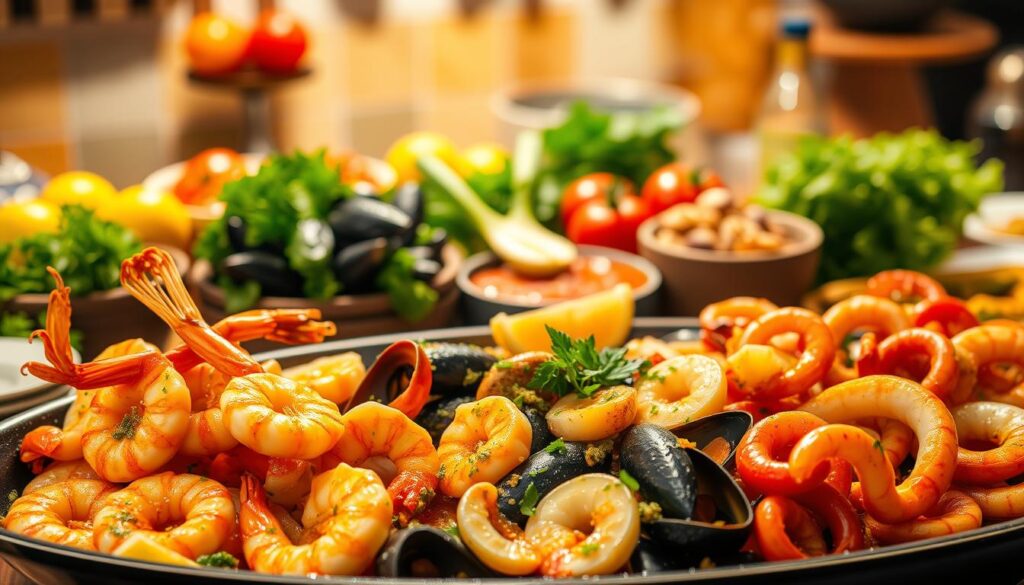
The Art of Spanish Baking
Spanish baking is a delightful journey through various flavors and textures, showcasing the country’s rich culinary heritage. When you explore this art, you will find both traditional breads and delicious desserts that have stood the test of time, appealing to taste buds worldwide. Baking in Spain plays an essential role, creating a comforting and satisfying experience for those who indulge. Let’s take a closer look at the staples of Spanish baking.
Traditional Breads
Among the most cherished aspects of spanish baking are its traditional breads. Breads like pan de cristal and ensaimada not only serve as staples in Spanish households but also highlight regional specialties. Pan de cristal, known for its crusty texture and airy inside, is perfect for pairing with olive oil and tomatoes. The fluffy ensaimada hails from Majorca and makes for a delightful treat with a sprinkle of powdered sugar.
- Pan de Cristal: Light and airy, this bread is a perfect companion for tapas.
- Ensaimada: A sweet, spiral pastry that is often enjoyed for breakfast or dessert.
- Bollos: These soft rolls are commonly enjoyed with chocolate for breakfast.
Desserts You’ll Love
Diving into the realm of favorite spanish desserts, you will be enchanted by classics such as crema catalana and tarta de Santiago. Crema catalana, similar to crème brûlée, features a creamy custard base topped with a caramelized sugar crust. Tarta de Santiago is a delightful almond cake with a hint of lemon, often decorated with the St. James cross. These desserts not only satisfy the sweet tooth but also embody the essence of Spanish celebrations.
- Crema Catalana: A custard dessert with a crispy sugar topping.
- Tarta de Santiago: An almond cake that symbolizes the region of Galicia.
- Flan: A smooth caramel custard that melts in your mouth.
Each bite of these favorite spanish desserts brings the flavors of Spain into your home, making every occasion a mini celebration. Embrace the art of spanish baking and enrich your culinary experiences with the traditional flavors of Spain.
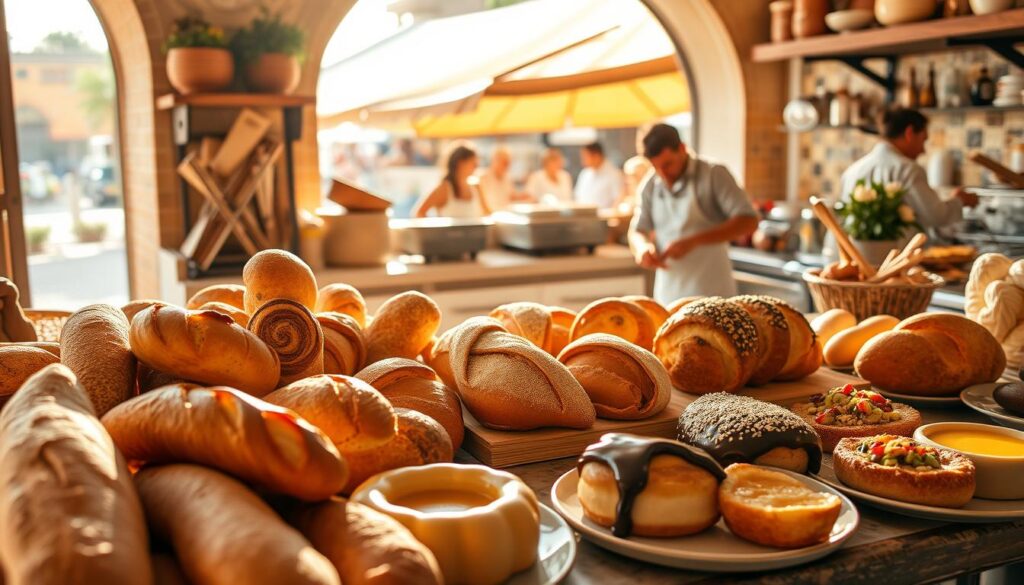
Celebrating Spanish Festivals Through Food
The rich tapestry of Spanish culture comes alive through its vibrant festivals, each celebrated with unique culinary delights. These food celebrations provide a remarkable insight into regional traditions, where ingredients come alive in signature dishes from festivals. You might find yourself immersed in the local flavors, participating in communal gatherings celebrating not just food, but the culture at large.
Festivals and Their Signature Dishes
Spanish festivals are famous not only for their lively activities but also for the delectable food offerings. Here are some noteworthy events and their associated culinary delights:
| Festival | Location | Signature Dish | Years Celebrated |
|---|---|---|---|
| The Wine Battle | Haro | Wine | Since 553 AD |
| Seafood Festival | ‘O Grove’ | Seafood Platters | Over 50 years |
| La Tomatina | Buñol | Tomato Dishes | Since 1945 |
| Olive Festival | Jaen | Olive-Based Dishes | Annual in December |
| Cider Festival | Gijón | Cider | Annual festival |
| Octopus Festival | O Carballiño | Galician Octopus | Annual festival |
Cultural Importance
Food is a central element in Spanish festivals, reflecting historical traditions and social values. Through these food celebrations, communities strengthen their bond and share their heritage with visitors. You will discover that each bite tells a story, connecting you to the very essence of Spanish culture and identity. Engaging in these experiences allows for a deeper appreciation of how culinary traditions evolve while staying rooted in history.

Eating Like a Local: Spanish Dining Etiquette
Understanding spanish dining etiquette can significantly enhance your culinary adventures in Spain. Paying attention to local customs and practices makes for a more enjoyable experience. Embrace the communal nature of meals, where sharing is not just accepted but encouraged. Observing proper table manners and nuances will help you fit in seamlessly with local dining culture.
Tips for Your Dining Experience
- Keep your hands visible on the table; this reflects openness and helps maintain an inviting atmosphere.
- Adopt the continental dining style by holding forks in your left hand and knives in your right, ensuring utensil positions remain consistent throughout your meal.
- Wait for everyone to be served during the first and third courses to showcase patience and respect for shared meals.
- Remember that coffee is traditionally served after dessert, a subtle but important timing feature of meals in Spain.
- Be aware that outdoor dining is popular. Arrive early, as tables operate on a first come, first serve basis.
Common Mistakes to Avoid
- Avoid the urge to modify your order; traditional Spanish dishes are often unchangeable, and locals appreciate the authenticity.
- Steer clear of the habit of multiple dips when sharing sauces; this goes against the ‘single dip’ culture observed in Spain, emphasizing hygiene and etiquette.
- Resist the temptation to eat bread by tearing it apart; instead, cut it for a more refined dining experience.
- Don’t expect water to be free; inquire about still or sparkling options before assuming.
- Be prepared for lively and overlapping conversations; it’s normal to engage in animated discussions at the table.

Spanish Cuisine Beyond the Plate
Exploring Spanish cuisine extends far beyond the dining table. Vibrant food markets and engaging cooking classes offer immersive experiences that showcase the heart of Spanish culture. These spaces invite you to learn about Spanish cuisine while enjoying the local atmosphere and flavors.
Food Markets to Explore
Food markets serve as a feast for the senses. Places like Mercado de San Miguel and La Boqueria provide an authentic glimpse into Spanish culinary culture. While wandering through the bustling stalls, you can find fresh produce, artisanal cheeses, and cured meats. You’ll notice the vibrant colors and enticing aromas that make exploring food markets a must for any culinary enthusiast.
Cooking Classes You Can Join
Participating in Spanish cooking classes presents an opportunity to dive deeper into traditional dishes and modern interpretations. You can learn techniques straight from accomplished chefs, gaining insights into regional flavors and ingredients. Whether you wish to perfect your paella or experiment with fusion tapas, these classes allow you to learn about Spanish cuisine in a hands-on, fun environment.

| Market | Location | Specialties |
|---|---|---|
| Mercado de San Miguel | Madrid | Tapas, wines, fresh seafood |
| La Boqueria | Barcelona | Fruits, meats, cheeses |
| Mercado Central | Valencia | Local produce, spices |
Conclusion: Embracing Spanish Flavors at Home
Embracing Spanish flavors in your home cooking offers a delightful way to experience the richness of this diverse culinary tradition. Start with traditional recipes that highlight staples such as olive oil, fresh vegetables, and spices, which embody the essence of Spain’s Mediterranean diet. Experimenting with these foundational ingredients makes it easier to cook Spanish dishes at home while keeping health benefits in mind, such as lower rates of heart disease and obesity.
Engaging with local markets can enhance your cooking experiences as you source fresh produce that aligns with your culinary creations. This exploration not only supports sustainable farming but also introduces you to the vibrant ingredients inherent in Spanish cooking. To further improve your skills, consider utilizing resources like trusted cookbooks, food blogs, and even culinary classes, which will deepen your understanding of techniques and flavor profiles that make Spanish cuisine so beloved.
As you journey to explore Spanish cuisine, remember that each dish tells a story, from the rustic excitement of tapas to the communal essence of a paella shared among friends. Infusing your meals with authentic Spanish flavors not only satisfies the palate but also nurtures a connection to Spain’s rich culinary heritage and cultural values. So, roll up your sleeves and embark on the rewarding adventure of cooking Spanish dishes in your kitchen today!
